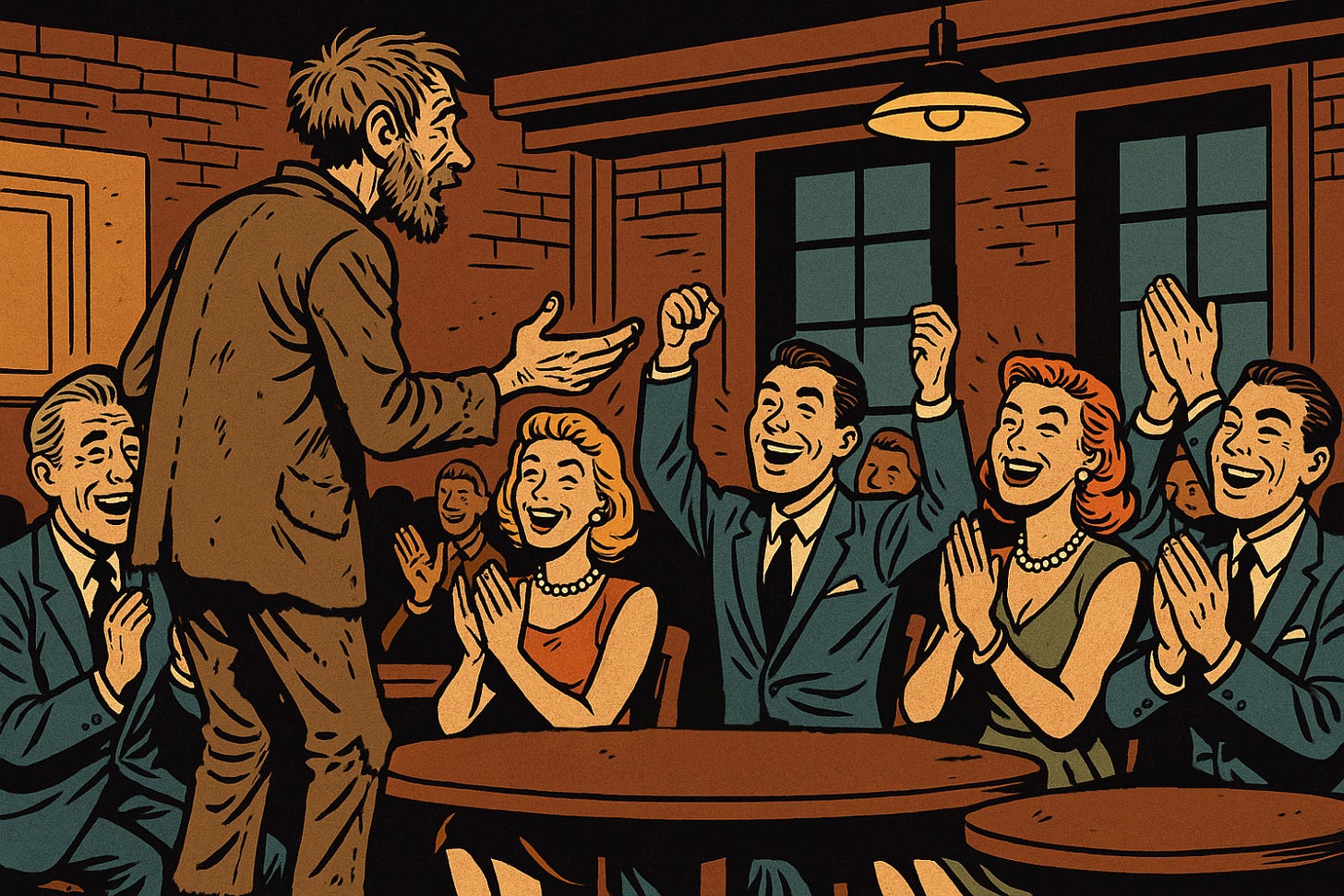A well-fed artist has nothing to say — he just wants food and drink, not to make a change...
The Atomic Layers: S9E18 (00255)
Atomic Layer of the Day:
The worst thing that can happen to you in life, is when your dreams come true.
When I started writing about 3D printing in 2013 on my former Polish portal, my goal was to become the leading voice and authority in the field. I achieved that in less than two years.
When I returned to writing in mid-2024, after a self-imposed, one year exile from the AM industry, I quietly hoped someone would notice and appreciate my work again. Less than six months later, I had become one of the most read and talked-about writers and analysts in the global AM industry.
Twice, my dreams came true—faster and more completely than I ever imagined. And yet…
Recognition, appreciation, and gratitude from readers are wonderful—but they are their own reward. Nothing more comes with them. They never have, and likely never will, translate into money. Creating engaging content has always been, and will always be, free.
People who actually make money from writing online are illusionists. They promise progress, personal growth, increased skills, effortless ways to earn money—or losing 30 kg in 3–4 months. Those who pay for this are really buying hope. A vision of a better version of themselves.
Honesty and truth, on the other hand, are always free. No one wants to pay just to find out how bad things really are, where the problems come from, and what mistakes they’re making.
We eagerly pay for illusions. Cold, hard analysis is only accepted if it comes with a promise of improvement. If it requires effort to extract insight, people don’t want it—unless it’s free. Then suddenly, it’s highly valued.
This is especially true in the AM industry, which—let’s face it—was built on bold visions, promises, and hype. And when that ran out… no one quite knows what to do next.
In my latest article on VoxelMatters, I break this problem down. I explore the psychology of innovation in 3D printing—and the three AM Leaders Personas.
Here's an excerpt:
We can divide the leaders of the AM industry into three categories:
Innovators – the largest group, over 90% of the industry. These are the people who invent and develop the technology. Think Charles Hull, Carl Deckard, Scott Crump, Hans Langer, Adrian Bowyer, and many, many more.
Visionaries – people who take the technology and elevate it to a higher level, presenting it in the real business world. They’re the ones who monetize AM. Examples: Avi Reichental, Bre Pettis, and more recently, Ric Fulop.
A hybrid of the two –innovators who successfully transformed their invention into a visionary business. I’ve only found three (and with all due respect, I’m not 100% sure about the last one): Maxim Lobovsky, Josef Průša, and Gregory Mark.
Let me say it right away: only the third group guarantees long-term success. (That’s why Mark comes with a question — he’s the only one who left his original company, but started a new one that’s just as innovative… so we’ll see.)
The second group often created visions that were disconnected from technological reality. Visionaries promise more than the current state of the technology can deliver. But they’re not liars — after all, Bre Pettis’ original vision came true, just a decade later, thanks to companies like Bambu Lab and Creality.
The source of all business problems in the AM industry lies in the first group — the Innovators. The very same people who push the development of 3D printing technology forward the most…are also the ones holding it back from full bloom.
And they have no idea they’re doing it!
To succeed in AM, you need to combine innovation with vision. The catch is — deep down, innovators despise visionaries. And visionaries can’t exist without the media. So… innovators despise the media.
Let me explain.
Read the full article:
We will love you for free
PS: the title of the article — "Because a well-fed artist has nothing to say — he just wants food and drink, not to make a change" (“Bo artysta syty nie ma nic do powiedzenia, chce picia i jedzenia, nie chce nic zmieniać”) — is a line from the song “Las Maquinas de la Muerte” by Polish musician Kazik Staszewski, taken from the album of the same name.
The following line is: "Only a hungry artist is credible" ("Bo tylko wiarygodny jest artysta głodny").
Atomic Layer from the Past:
04-18-2017: Zortrax introduced Z-ESD.
News & Gossip:
Curiteva’s 3D-printed PEEK cervical spine implant, Inspire, has surpassed 5,000 successful applications. Its fully porous, nanotextured structure enhances bone integration and healing. Surgeons report higher fusion rates, visible bone growth in 3–6 months, and reduced need for bracing. Curiteva plans to expand this technology to other spinal procedures.
Phillips Corporation and MX3D have partnered to expand robotic DED metal 3D printing in the U.S. Using MX3D’s WAAM technology and MetalXL software, they aim to serve industries like aerospace and shipbuilding. Phillips will distribute and support MX3D systems, enabling efficient, large-scale metal part production with industrial robots.
AML3D has commissioned its largest ARCEMY WAAM system at the US Navy’s Additive Manufacturing Center in Virginia, in partnership with Austal USA. The large-format system boosts shipbuilding capabilities with a 35 m³ build volume. AML3D aims to expand its role in U.S. defense and industrial supply chains.





